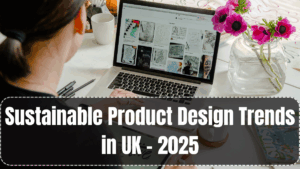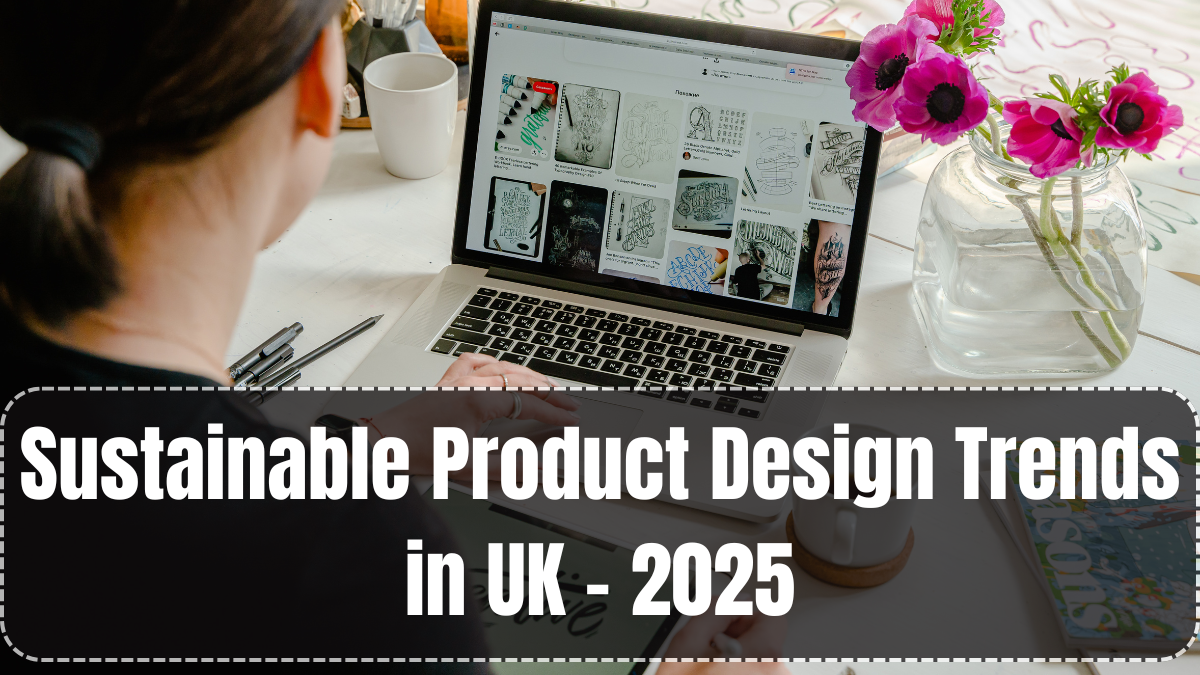Sustainability is no longer a niche concern—it’s now a core pillar of product development across the UK. In 2025, businesses, designers, and manufacturers are prioritizing eco-conscious decisions at every stage of the design process. Whether it’s sourcing materials, reducing carbon footprints, or designing for circularity, Sustainable Product Design UK 2025 is redefining how products are made, used, and recycled.
Let’s explore the key trends, technologies, and real-world examples shaping this growing movement.

What Is Sustainable Product Design?
Sustainable product design involves creating products that minimize negative environmental impact through:
-
Eco-friendly material sourcing
-
Energy-efficient production methods
-
Reusable, recyclable, or biodegradable components
-
Longer product life cycles
-
Waste minimization during manufacturing
UK designers in 2025 are also integrating social and ethical considerations, ensuring that sustainability goes beyond the environment to include community well-being, fair labor, and accessibility.
Key Sustainable Design Trends in the UK – 2025
The landscape of sustainable design is expanding rapidly. Here are the leading trends designers and companies are adopting in 2025:
-
Circular Product Design
Designers are creating products meant to be reused, refurbished, or remanufactured, rather than discarded after use. Products now come with take-back schemes or modular designs that allow easy repair and upgrade. -
Biodegradable & Compostable Materials
From packaging to consumer goods, there’s a shift toward plant-based plastics, mushroom leather, hemp composites, and sugarcane fiber materials that naturally decompose after disposal. -
Minimalist Aesthetics = Less Waste
Simple, clean designs with fewer components are reducing resource use and streamlining production. Brands like Muji UK and IKEA are championing this approach. -
Eco-Conscious Packaging Innovations
Packaging is becoming more than protective—it’s becoming planet-friendly. Compostable mailers, seaweed-based wrappers, and plastic-free containers are common across UK stores in 2025. -
Local Material Sourcing
More UK companies are prioritizing locally sourced materials to cut transportation emissions and support the regional economy. -
Digital Product Twins for Sustainable Prototyping
Digital twins and AI simulation tools are being used to test product functionality and material efficiency—reducing the need for physical prototypes and lowering development waste.
Real-World Examples of Sustainable Product Design UK 2025
Here are examples of how brands and startups across the UK are applying sustainable design in practice:
-
Lush UK continues to lead with its package-free cosmetics, using solid shampoos and recycled-paper wraps.
-
Notpla, a London startup, uses seaweed to create edible packaging for food and takeaway deliveries.
-
Stella McCartney incorporates bio-based and cruelty-free materials into its fashion collections.
-
REBO bottles use smart tech and recycled plastic to track hydration while funding ocean clean-up.
These examples highlight how UK businesses are blending innovation with responsibility.
The Role of Government and Regulations in 2025
Government initiatives are playing a big role in shaping Sustainable Product Design UK 2025:
-
The UK government offers grants and tax incentives to businesses meeting eco-design standards.
-
The Plastic Packaging Tax, introduced earlier, continues to push brands toward sustainable packaging materials.
-
New eco-labeling requirements ensure transparency in supply chains and help consumers make green choices.
-
DEFRA’s Extended Producer Responsibility (EPR) regulations hold manufacturers accountable for the entire lifecycle of their products.
Designers must now consider regulatory compliance as part of the design process.
Top Tools and Certifications for Sustainable Designers
To build truly sustainable products, UK designers in 2025 rely on a range of tools and certifications:
| Tool/Certification | Purpose |
|---|---|
| Cradle to Cradle | Evaluates product safety and recyclability |
| BREEAM | Assesses eco-building and product environments |
| Material Bank UK | Offers access to sustainable material libraries |
| Carbon Trust Footprint | Helps measure and reduce carbon emissions |
| Sourcemap | Provides supply chain transparency tracking |
| Life Cycle Assessment (LCA) | Analyzes the environmental impact of products |
Being certified not only ensures eco-responsibility but also builds consumer trust and market credibility.
Why Businesses Are Prioritizing Sustainable Design in 2025
Sustainability is driving real business results:
-
Consumers prefer eco-friendly brands, especially Gen Z and Millennials
-
Sustainable products have longer shelf appeal and fewer returns
-
Government policies and investor pressure demand environmental accountability
-
Eco-conscious brands build stronger brand loyalty and reputation
Sustainable Product Design UK 2025 is not just a design trend—it’s a business growth strategy.
FAQs
What are the top sustainable product design trends in the UK in 2025?
Key trends include circular design, biodegradable packaging, local sourcing, and minimalism in aesthetics and materials.
Are sustainable materials easily available in the UK?
Yes. Platforms like Material Bank UK and GreenSpec offer access to a wide range of certified sustainable materials for every industry.
What certifications are needed for eco-design in 2025?
Designers often use Cradle to Cradle, BREEAM, and Carbon Trust certifications to validate the sustainability of their products.
How are UK companies reducing packaging waste?
Brands are switching to compostable, recyclable, or reusable packaging, with innovations like seaweed wraps and paper foam replacing plastic.
Is sustainable product design more expensive?
Initially, some costs may be higher, but long-term savings, customer loyalty, and regulatory incentives make it cost-effective over time.
Click here to know more.
